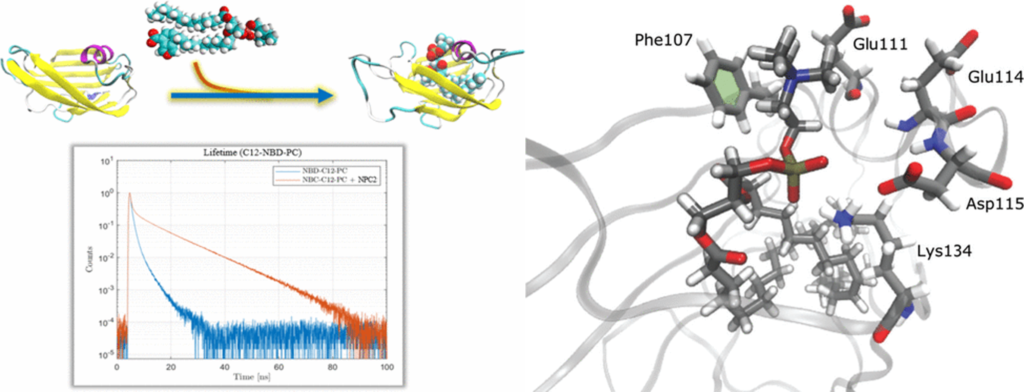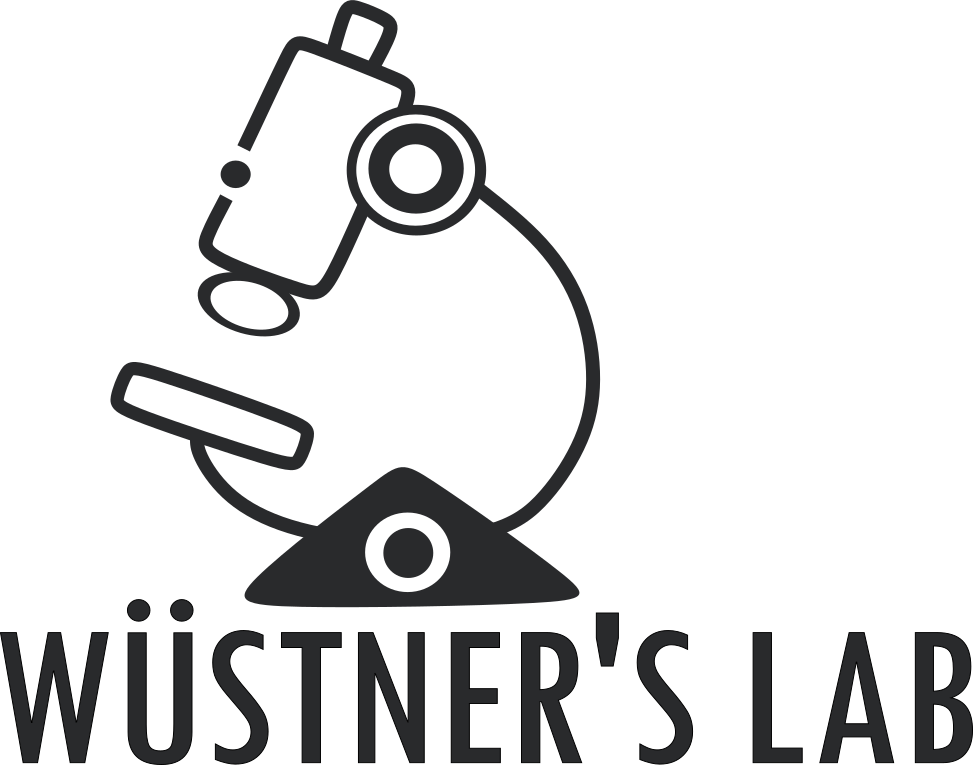Research
Fluorescence studies of cellular cholesterol transport and membrane dynamics

We have a long-term interest in transport of cholesterol and other sterols and have developed a unique platform for imaging intrinsically fluorescent sterols with minimal chemical alteration compared to their natural counterparts. This also includes rational computational design and organic synthesis of new sterol probes. Using ultrasensitive microscopy, we are studying the lateral and transversal distribution of such sterols in the plasma membrane, thereby revising current models of membrane architecture. We have discovered an important role played by non-vesicular transport in shuttling sterols between intracellular organelles in yeast and mammalian cells. This process is mediated by soluble or membrane-integrated sterol transport proteins, whose absence or dysfunction can lead to neurodegenerative diseases, such as Niemann Pick type C disease.
Experimental and computational characterization of sterol-protein interactions

Specific sterol-protein interactions are not only key to regulation of intracellular cholesterol distribution but are also part of the control of metabolism exerted by nuclear receptors. In collaboration with colleagues from the department of physics, chemistry and pharmacy at SDU, we combine optical spectroscopy with molecular simulations to characterize the specificity, energetics and dynamics of sterol-protein interactions. This has already led to new insight into multi-ligand specificity of lysosomal and plasma membrane sterol transporters, allowing us to trace known clinical mutations back to concrete molecular binding mechanisms. Currently, we focus also on the mechanisms of allosteric protein regulation by sterols and on sterol related protein-membrane interactions.
